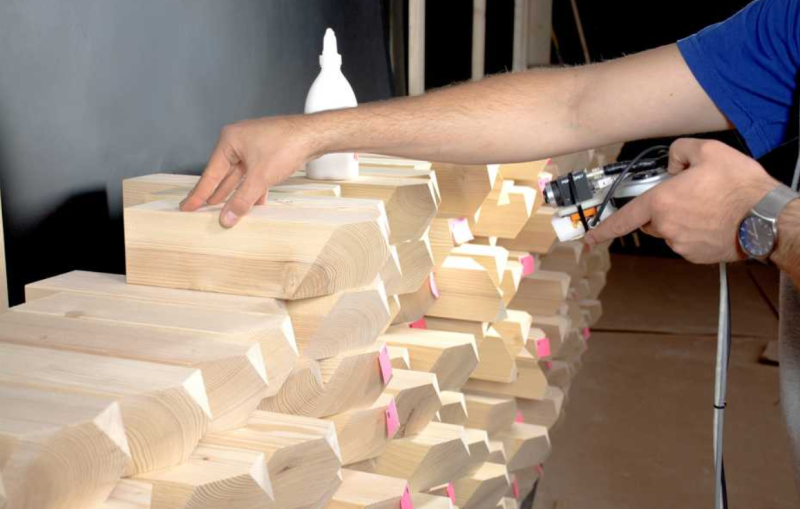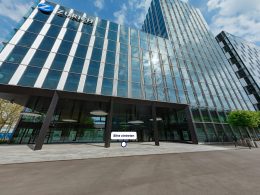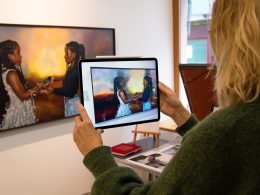The AR technology from ETH spin-off Incon.ai makes it possible to place building blocks in space with millimetre precision. This makes buildings with patterns or acoustic effects possible.
Shadow effects, undulating patterns or acoustic effects: Architectural works of art can be created when bricks are laid on top of each other at special angles. In order for the effects to come into their own and for the building to remain stable at the same time, the bricks must fit with millimetre precision. Such precision can only be achieved with a great deal of effort using conventional building plans and masonry techniques.
Thanks to a new technology based on augmented reality, even the most unusual ideas can now be realised. It was developed by roboticist and ETH Pioneer Fellow Timothy Sandy.
Software guides bricklayers
The architects create the design on the computer and load the 3D plans onto software. While working on the construction site, the bricklayers then point a camera at the building. The software recognises the objects and compares the position of the individual parts with those in the virtual design.
On a monitor, she shows the construction workers how they need to align the building blocks. "Thanks to this technology, humans can build with practically the same precision as robots," says Sandy, "making completely new buildings and shapes possible." Sandy's software has already been used in two projects.
Deployment in Greece for the first time
The second building project involves the walls of a cafeteria of the company Basler & Hofmann in the Zurich village of Esslingen, a timber construction also designed by the architects Gramazio Kohler. The individual blocks were sawn into polygons on the front side beforehand. The asymmetrical shape of the blocks creates changing shadow patterns.
Precise AR helps manual labour
Above all, however, robots are still far removed from human capabilities in terms of mobility and dexterity. Only with very specific, flat building blocks is it already possible to build with robotic support. "With the software, the advantages of computer design and manual labour can be combined".
In the two pilot projects, the software was loaded onto a computer that was connected to a camera and a monitor. However, a simple smartphone is also sufficient as a terminal device.
"Compared to other AR solutions, the new technology is much more precise," says developer Sandy. It recognises and tracks objects even if something obscures the view or disturbs elements in the background. Even strong shaking of the camera or a system restart are no problem.
Source: ETH / Youtube









